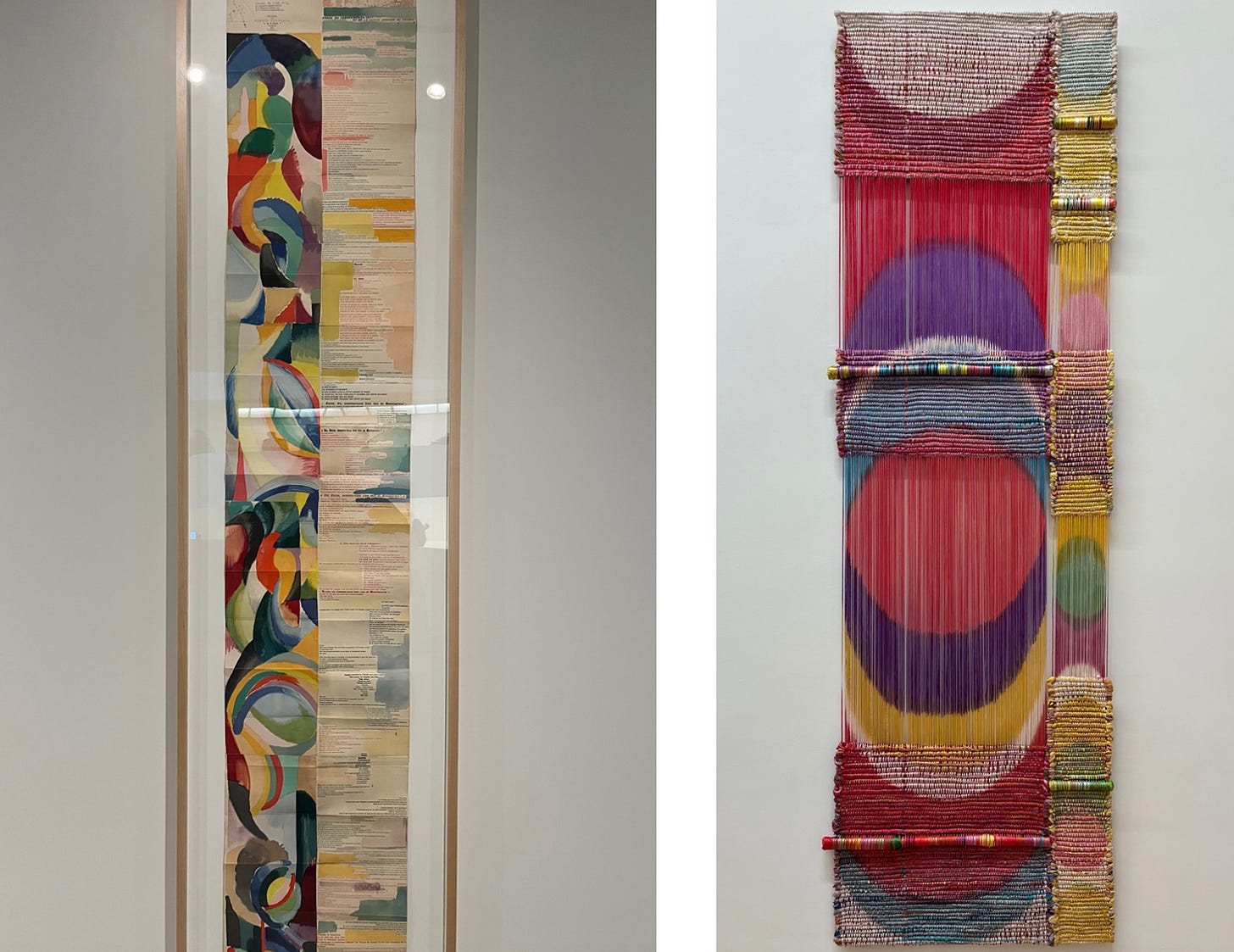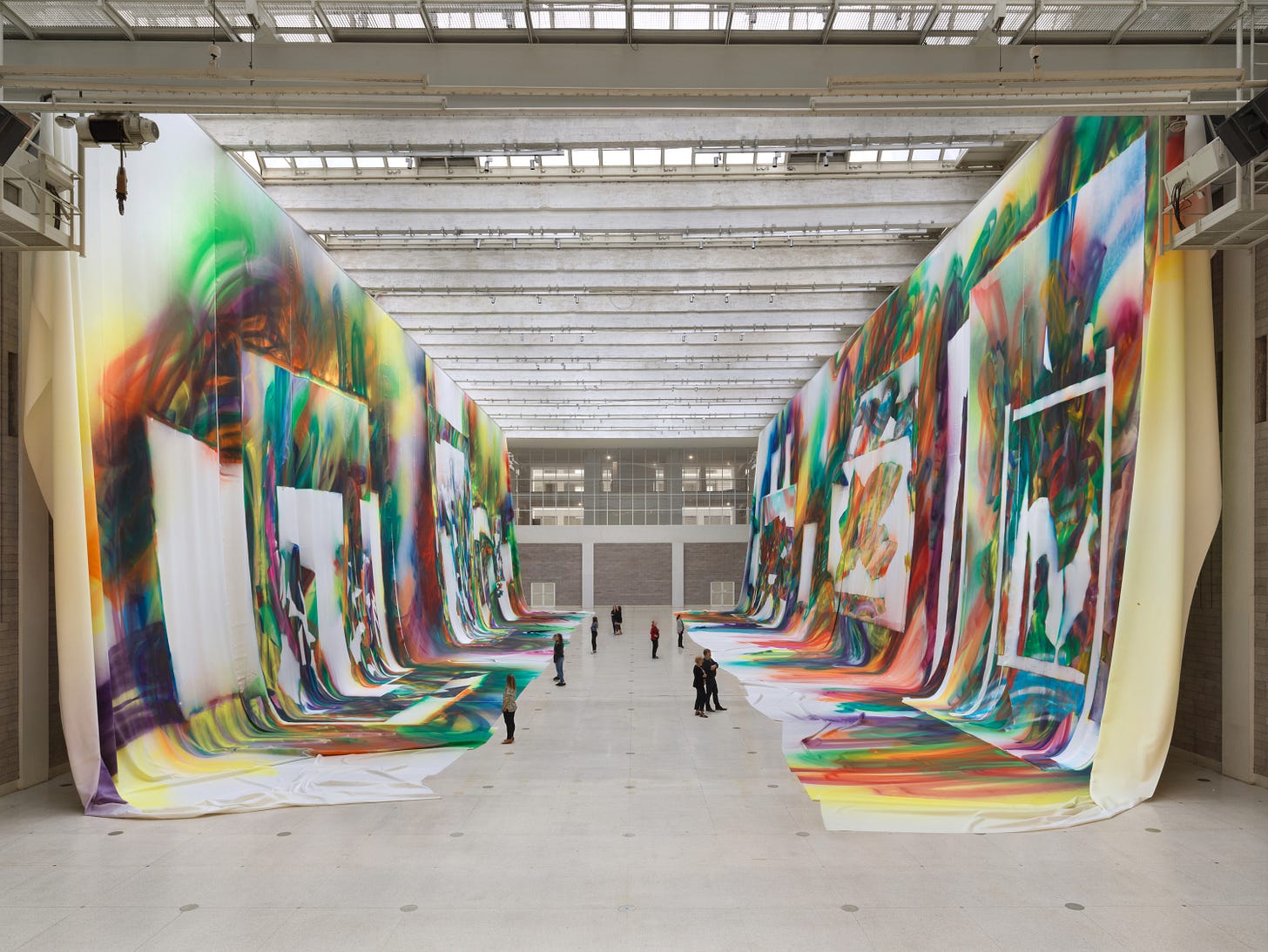I've been in New York City, mostly running between galleries and museums trying to see as much as I can. I’ve been deep in writing for the past few months, so it felt like a treat to get out. It was also a reminder of how important it is to see art in person: not just for your own good (and seeing wondrous artworks), but for the surprises that can occur, and the things you pick up, learn, and link together on the way.
This was my thought when I saw three shows coincidentally blocks away from each other on the Upper East Side.
The first was Orphism in Paris (1910–30) at the Guggenheim, featuring Sonia and Robert Delaunay, Mainie Jellett, František Kupka, and more.
Orphism was an art style that uses bright colours and abstract shapes to create a sense of rhythm and movement, in paintings that feel ‘musical’. (The name stems from Orpheus, Greek god of music.) Its pioneers were inspired by the pace and vibrancy of early 20th century modern life, technology, and science.
It was fascinating to visit in today’s age, to see how artists grappled with the speed of technology 100 years ago, shattering electric colours on a canvas to evoke the dynamism of the new world.
This is Sonia Delaunay’s Prismes Électriques, 1914, which, to me, looks like electrically-lit street lamps, or a bird's eye view of cars careening down Parisian boulevards. What do you see?
It was then across the road to Salon 94’s textile exhibition, where the Japanese artist Mitsuko Asakura was showing weavings (below, right) that felt strangely in conversation with Delaunay (except Asakura’s concentric coloured circles were stitched and stretched).
On the left is Delaunay’s paintings overlaying a poem by Blaise Cendrars, that follows the journey of a young boy from Russia to Paris via the Trans-Siberian Express.
Also on view at Salon 94 were Qualeasha Wood’s unnerving tapestries about the state of our doom-scroll culture (below right). They were a welcomed link with Robert Delaunay's Eiffel Tower (1911). Both works get us to think deeply about how artists are dealing (and dealt) with technology-fuelled worlds. Isn’t it interesting that these works were made 100 years apart?
(By the way – these shows aren’t connected; it was just fascinating to see that, mere metres from each other, a dialogue was beginning to take shape.)
Afterwards, it was to Katharina Grosse – who is this week’s GWA Podcast guest! – at Gagosian, a few blocks away. With paint, Grosse collapses all borders, and invites us to sense, feel, touch and experience painting in ways never done before.
She also has a very interesting dialogue with Orphism – visually, physically, and technologically. Grosse plays with scale. It’s as if she is situating us on one of Delaunay’s brush strokes: prompting us to consider our micro vs macro place in the world. It reminds me of looking at pictures of Earth from space, and how different it looks and feels when you’re on it.
Grosse also explores technological developments in painting. Not only does she ‘visualise’ speed and colour akin to Delaunay, but shows how much painting has progressed by utilising it in ways that were previously unimaginable – with her spray-gun. Looking at her work, then thinking back to Delaunay’s gets me to see them in a whole new light.
Grosse has talked about the idea of “resetting” what painting can be. These are the sorts of works she is able to achieve with her tool!
Listen to my conversation with the brilliant and eloquent Grosse about her groundbreaking work on the GWA podcast. On how her art combines painting, architecture, and theatre, she said:
“I want the person to be part and parcel of the whole thing, to actually change the work as well. I think that I'm not seeing things separately. […]. I see clusters. I see large things. I don't see differences in terms of orders between things”
I love seeing how painting, and other artforms, have expanded over time, yet can still deal very directly with their present moment. Artists have an incredible ability to capture the world around them – and if they didn’t, how else would we understand the time we’re living in?
I was thinking as I was walking last week, all NYC needed was an exhibition by Sarah Sze or Julie Mehretu to complete the Orphism link, and get us to think about the possibilities of painting, sculpture, technology, and more.
Luckily, you can go and see a great work by Mehretu at Marian Goodman’s new gallery in TriBeCa. For Sze, you can listen to her on the podcast (Julie too!).
I will write about other shows and artworks, soon. That was just Wednesday afternoon! Xoxo Katy












What a very full and art filled day - and that was only Wednesday
such a great newsletter, thank you!